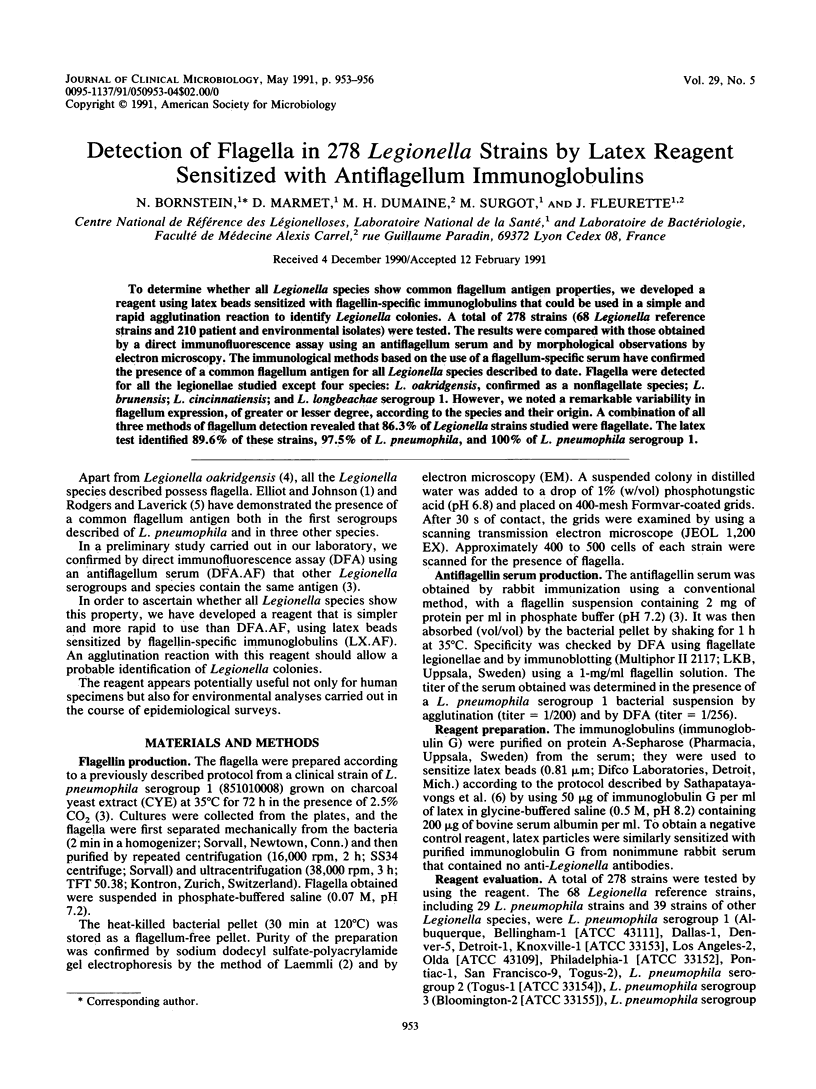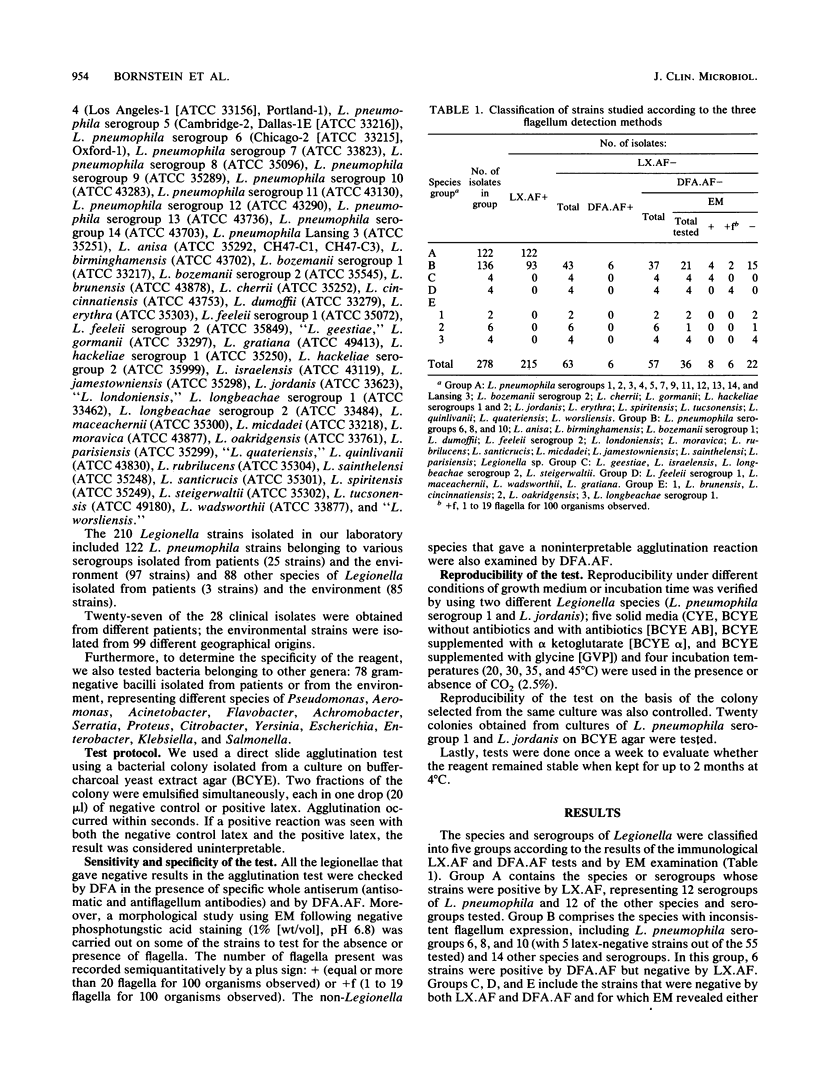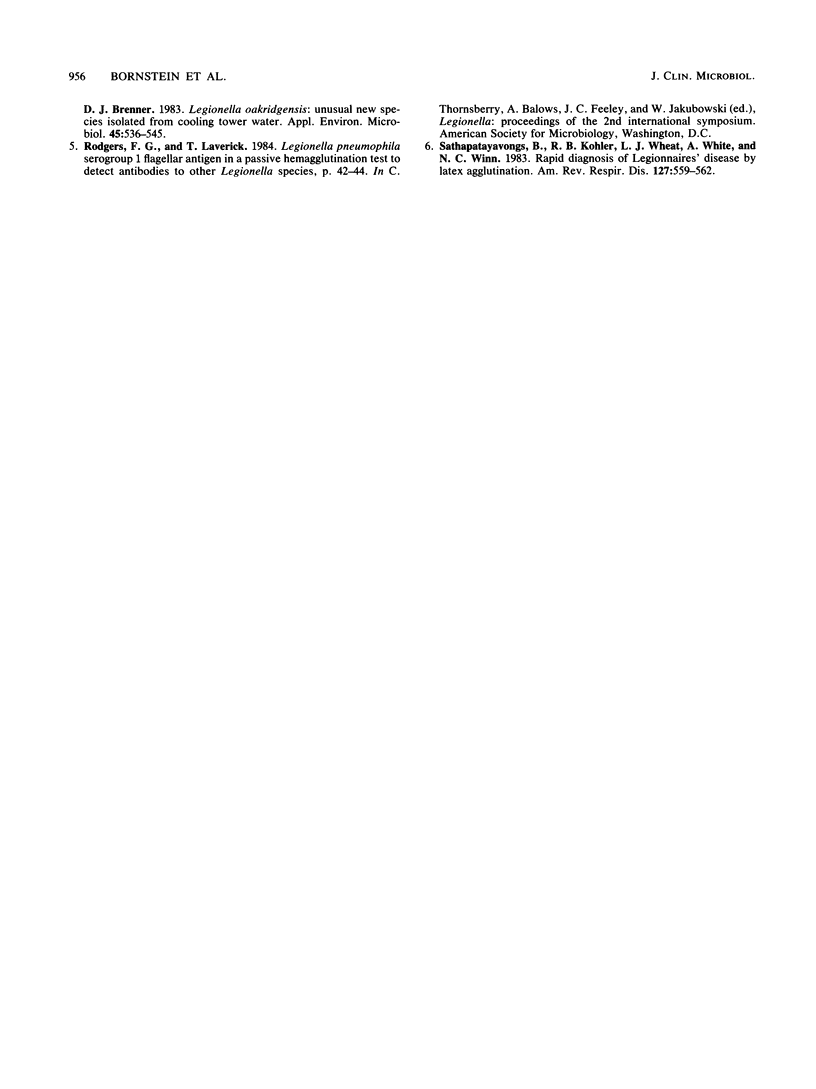Abstract
To determine whether all Legionella species show common flagellum antigen properties, we developed a reagent using latex beads sensitized with flagellin-specific immunoglobulins that could be used in a simple and rapid agglutination reaction to identify Legionella colonies. A total of 278 strains (68 Legionella reference strains and 210 patient and environmental isolates) were tested. The results were compared with those obtained by a direct immunofluorescence assay using an antiflagellum serum and by morphological observations by electron microscopy. The immunological methods based on the use of a flagellum-specific serum have confirmed the presence of a common flagellum antigen for all Legionella species described to date. Flagella were detected for all the legionellae studied except four species: L. oakridgensis, confirmed as a nonflagellate species; L. brunensis; L. cincinnatiensis; and L. longbeachae serogroup 1. However, we noted a remarkable variability in flagellum expression, of greater or lesser degree, according to the species and their origin. A combination of all three methods of flagellum detection revealed that 86.3% of Legionella strains studied were flagellate. The latex test identified 89.6% of these strains, 97.5% of L. pneumophila, and 100% of L. pneumophila serogroup 1.
Full text
PDF



Selected References
These references are in PubMed. This may not be the complete list of references from this article.
- Elliott J. A., Johnson W. Immunological and biochemical relationships among flagella isolated from Legionella pneumophila serogroups 1, 2, and 3. Infect Immun. 1981 Aug;33(2):602–610. doi: 10.1128/iai.33.2.602-610.1981. [DOI] [PMC free article] [PubMed] [Google Scholar]
- Laemmli U. K. Cleavage of structural proteins during the assembly of the head of bacteriophage T4. Nature. 1970 Aug 15;227(5259):680–685. doi: 10.1038/227680a0. [DOI] [PubMed] [Google Scholar]
- Orrison L. H., Cherry W. B., Tyndall R. L., Fliermans C. B., Gough S. B., Lambert M. A., McDougal L. K., Bibb W. F., Brenner D. J. Legionella oakridgensis: unusual new species isolated from cooling tower water. Appl Environ Microbiol. 1983 Feb;45(2):536–545. doi: 10.1128/aem.45.2.536-545.1983. [DOI] [PMC free article] [PubMed] [Google Scholar]
- Sathapatayavongs B., Kohler R. B., Wheat L. J., White A., Winn W. C., Jr Rapid diagnosis of Legionnaires' disease by latex agglutination. Am Rev Respir Dis. 1983 May;127(5):559–562. doi: 10.1164/arrd.1983.127.5.559. [DOI] [PubMed] [Google Scholar]


